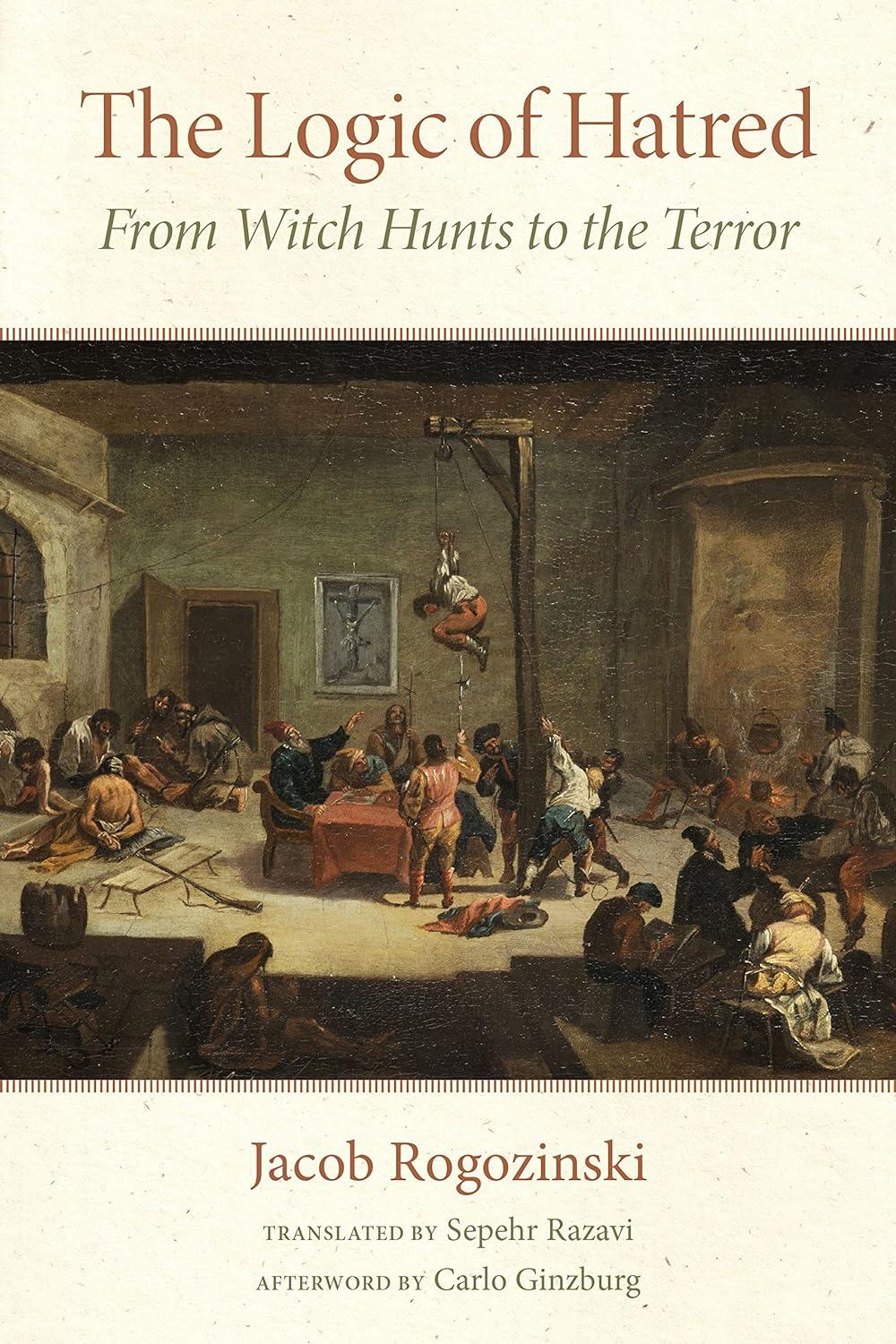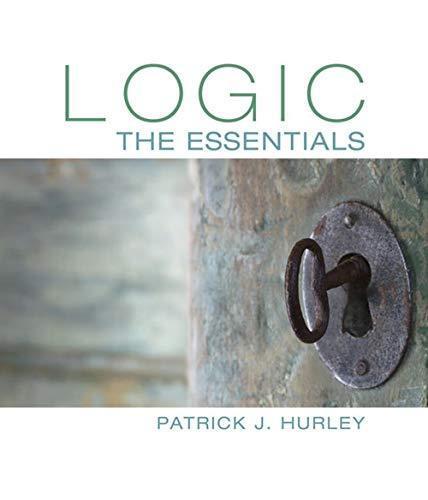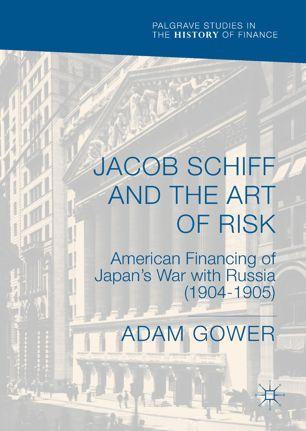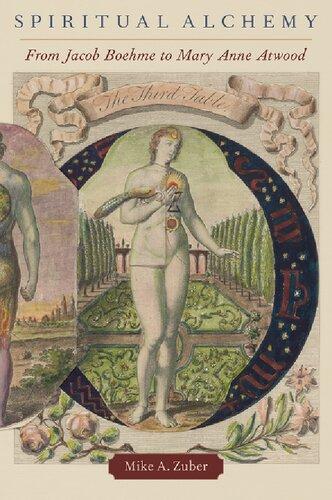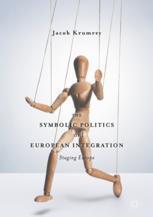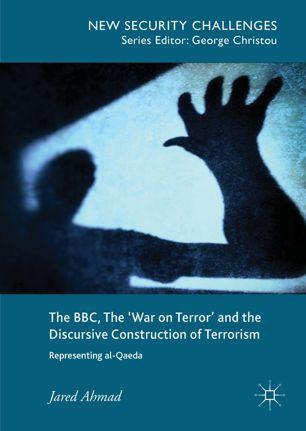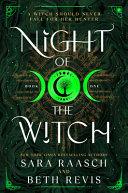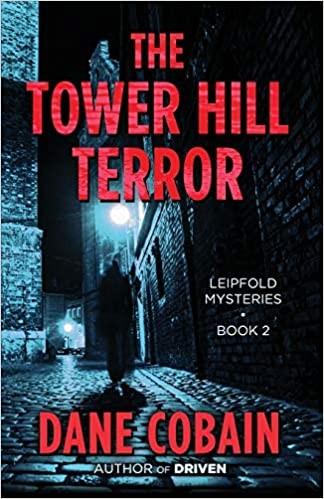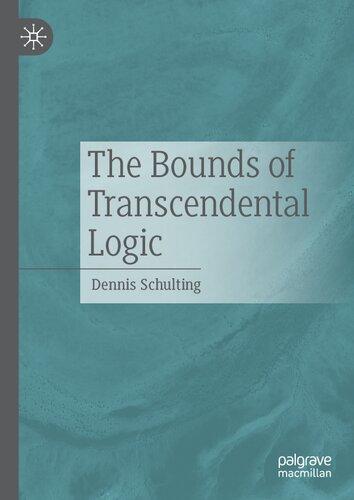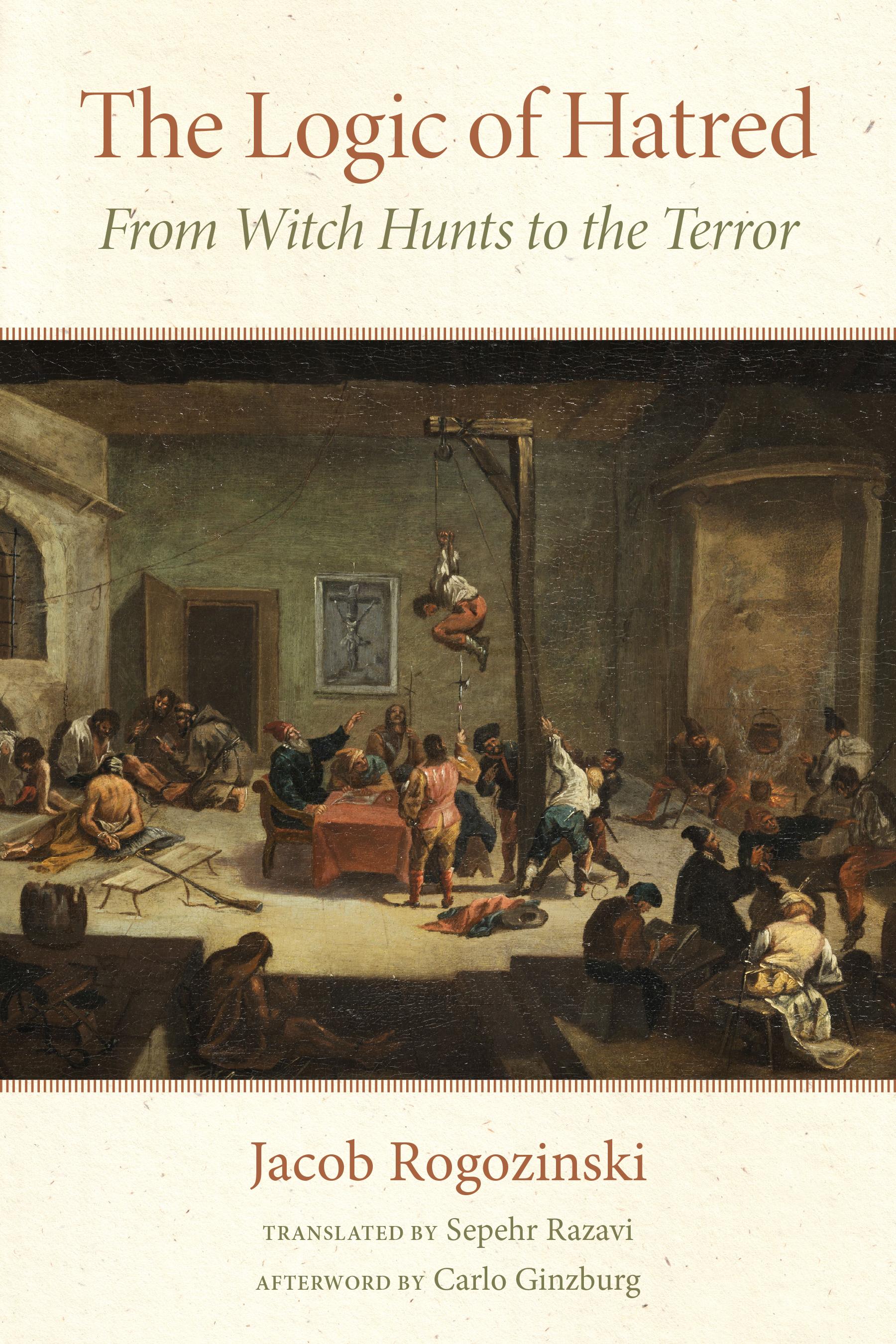The Logic of Hatred
FROM WITCH HUNTS TO THE TERROR
Jacob Rogozinski
Translated by Sephr Razavi
Afterword by Carlo Ginzburg
Fordham University Press New York 2024
Copyright © 2024 Fordham University Press
All rights reserved. No part of this publication may be reproduced, stored in a retrieval system, or transmitted in any form or by any means—electronic, mechanical, photocopy, recording, or any other—except for brief quotations in printed reviews, without the prior permission of the publisher.
This book was first published in French as Ils m’ont haï sans raison: De la chasse aux sorcières à la Terreur, by Jacob Rogozinski © Les Éditions du Cerf, 2015.
Fordham University Press has no responsibility for the persistence or accuracy of URLs for external or third-party Internet websites referred to in this publication and does not guarantee that any content on such websites is, or will remain, accurate or appropriate.
Fordham University Press also publishes its books in a variety of electronic formats. Some content that appears in print may not be available in electronic books.
Visit us online at www.fordhampress.com.
Library of Congress Cataloging-in-Publication Data available online at https: // catalog.loc.gov.
Printed in the United States of America
26 25 24 5 4
Introduction: A Forgotten Massacre 1
1. “All Women Are Witches” 27
2. A Death Mark 75
3. Confessing the Truth 88
4. The Capital Enemy 106
5. The World Upside Down: Contribution to a Phenomenology of Multitudes 144
6. Behind the Devil’s Mask 164
7. Worse Than Death 189
8. A Stranger among Us 217
Conclusion: “The Truth Will Set You Free” 245
Afterword, by Carlo Ginzburg 251
A Response to Carlo Ginzburg 255
Continuing Our Dialogue 259
In Memoriam: Index of Witch Hunt Victims 261
Yizkor 263
Notes 265
THE LOGIC OF HATRED
Introduction
A Forgotten Massacre
We have to hear the words never uttered [. . .] we have to lend a voice to these historical silences, at the horrible fermata where history stops speaking.
Jules Michelet
On August 31, 1601, in the village of Bazuel in Flanders, a peasant named Aldegonde de Rue, condemned for “witchcraft,” died at the stake. She was seventy years old. Because she had confessed her “crimes,” her judges granted her the privilege of being strangled by the executioner before the flames reached her body. Some years prior, a soldier passing by had publicly identified her as a witch. Upon seeing her, he exclaimed, “Now here’s a woman who is a witch! If I met you outside this town, I would put a sword through your body and if I knew where your house was, I would burn you inside it!” “Would you listen to that,” huffed Aldegonde, “but what is there to do: all women are said to be witches!” She was thus identified: Her infamia, that is, her bad reputation, was established; henceforth they would never let go of her. During the summer of 1601, one of her neighbors, a rich farmer with whom she had quarreled, accused her before the bailiwick’s court of being a witch and of having, through the use of magic, caused the death of one of his horses. Several other villagers confirmed the accusation, adding those of the deaths of a cow, two other horses, and the “strange illness” of a little girl. In order to prove her innocence, Aldegonde decided to go to the neighboring town of Rocroi and to be examined by their executioner, because it was claimed that he was unerringly able to spot witches. Unwittingly, she had thrown herself into the lion’s den. After having completely shaved her and inspected her “through all
the spaces and places of her body, even in the inside spaces like in the mouth and in the shameful parts,” the executioner discovered on her left shoulder a small mark similar, he insisted, to those he had found on the bodies of 274 women he had executed, “and that these executed women recognized their marks as authentic, and that the Enemy of the human beings marks them when he first copulates with the aforementioned witches.” The trap closed in. Repeatedly tortured per the judges’ orders, Aldegonde eventually admitted that she had participated in the Sabbath, rendered homage to Satan, and fornicated with a demon named Gauwe, and that he gave her a nocent powder that had allowed her to kill her neighbors’ horses and cow. Condemned to death, she would soon be executed.1 She would not be the first victim: Two years earlier, another resident of Bazuel, Reine Percheval, had also been sent to the stake as she had “bewitched” a cow that had given birth to a skinless calf . . . The executions of so-called witches would continue sporadically in the region for some years: The last French stakes also burned in Flanders, in Bouvignies, in 1679.
The life and death of an ordinary “witch,” of a victim among so many of the Great Witch Hunt that broke out in the middle of the fifteenth and lasted well into the seventeenth century. As we learn from historians, its victims number in the tens of thousands—counting 80,000 deaths does not seem exaggerated, and some historians even speak of 200,000 victims—in great majority women. Appearing first in Switzerland, these witch hunts progressively stretched across most of Europe, in multiple successive yet very unequal waves: Whereas England would be almost entirely spared, and the persecution remained uncommon in Italy, Spain, and France (except in peripheral regions: the Loraine, Flanders, and the Basque Country), it reached its apogee in Germany, which a contemporary witness described as the “country of stakes.” It is maintained that, in certain villages of Westphalia, there were hardly any women who escaped the stake . . . It would surge back, little by little, first stopping in the Netherlands, then in other countries—the practice of “witchcraft” remained a crime in France until 1682—and it would be extinguished entirely during the eighteenth century. Under torture, the accused almost always admit that they belonged to a “satanic sect,” that they renounced the Christian faith, poisoned men and livestock alike, and committed abominable crimes in the nocturnal meetings of the Sabbath: profaning hosts and crucifixes, practicing sodomy and incest, copulating with demons, sacrificing children to the devil while eating their flesh and drinking their blood . . . If voices were raised here and there to contest the judges’ methods and condemn their persecutions— those of clerks, jurists, doctors, or of thinkers such as Montaigne and Cyrano
de Bergerac—the immense majority of the population and the cultivated elites seemed to have adhered to these accusations.
Who still recalls this persecution? What trace have we kept of these thousands of victims, and how will we help them find justice? The term “witch hunt” has become synonymous with unjust violence and arbitrary exclusion, but how many who use it know that it refers to a specific historical phenomenon? There is no one who, in the name of the victims, could demand justice; and if that were to happen, there would be no one to answer for it. It is laudable of the Catholic Church to have recently apologized for the crimes committed in the past in its name. And yet, when feminists addressed the pope to have him officially condemn the extermination of witches, their request remained unanswered. No “tradition of the oppressed” was created, of which the witnesses could gainsay the official version of the murderers. Why is the memory of this persecution so elusive? We are told that the reason for this is that most of the accused were obscure and illiterate peasants who were of no interest to historians and could do nothing to pass down their stories. But are we certain of this? If we hear no resounding echo of their cries of pain, it is because their voices have been muzzled, because the traces of their massacre have been deliberately erased. Of course, the judges and the torturers made no effort to hide their crimes: The executions were public and drew large crowds. But the “crimes” of the so-called witches seemed so heinous that, to “purify” the city, they had to eliminate all reminders of their existence. It wasn’t enough to burn their bodies and to spread their ashes; often, the archives of their trial were also thrown into the flames. But that was not enough: They were disfigured. At the moment they were assassinated, they were depicted as hideous old women, perched on their broomstick, roasting human flesh, or concocting evil potions in their cauldrons. Literature and now cinema have taken hold of these caricatures. From the wicked witch of Snow White to that of the Wizard of Oz, the vision that the persecutors had of their victims still captures our imagination and keeps us from understanding the truth behind the Great Witch Hunt. Thus, the victory of the murderers seems to have been total and has made the work of memory exceedingly difficult.
We are therefore grateful for the patient work of the historians who have exhumed from the archives traces of these annihilated lives and have, behind the starkness of statistics and transcripts, allowed us to hear singular voices. What do these voices have left to tell us? We who no longer believe in Satan, in the evil spells and orgies of the Sabbath, how could their story interest us? Why evoke an experience that, through centuries, has become truly foreign to us? It is to try to understand the logic of hatred. For it is truly hatred that
motivates persecution. Fear, envy, anger, and desire to avenge real or imaginary wrongdoing also play a role, but the major affect that drives them all, the only affect that does not incite flight or repulsion of its object, or rather to inflict violence on it while nonetheless allowing it to live, the only affect that solely aims to annihilate, is hatred. It is said that occasionally envy plays a decisive role in persecutions. That is often the case, and we must therefore ask ourselves what precious possession a poor peasant like Aldegonde could have had to provoke a murderous impulse in her persecutors. And yet, Spinoza was aware of this, that “Envy is nothing but hatred itself”:2 The object after which the envious believes he is lusting is no more than a pretext for manifesting his hatred. It is not true, however, that hate is indifferent about its targets. This is what distinguishes it from aggressivity, from a simple and indeterminate “instinct of aggression.” Like love, hate always attaches itself to a singular object (or to a certain part of this object), and its relation to this object is as intense and exclusive as that of lovers. He who is under the influence of hatred allows himself to be captivated by those whom or which he hates, to the point of obsession, to the point of delirium, as though he were not able to move past that which he is straining to destroy. This is why the victory of hatred—the murder of the hated object—signals all at once its failure. And yet, instead of fading away, hatred most often searches for another target, which shows that the object of hatred is nothing more than an opportunity for its expression. Hatred then appears all at once indifferent to its object and indissociable from it. We must shed light on this paradox by questioning the status of the object-of-hatred.
Philosophers have been grappling with the question of evil, its “radicality” or its “banality,” for a long time. Their reflections risk falling short, however, so long as they do not take into account the affective matrix of evil, the banal feeling, shared universally (who dares to claim that they have never felt hatred?), that is at the root of the most radical evil. The thinkers who have confronted the topic are few in number. Spinoza gave it an eminent place among his “sad passions” that keep men in servitude and unhappiness. Indeed, he argues that feelings as diverse as envy, indignation, contempt, or anger are rooted in hatred; and he drew certain important connections, like its contagious character and the fact that we can be dominated “all at once by hate and by love” toward the same person. His analysis is not psychological, but ontological, for such affects express, according to him, the fundamental modalities of our power of being, that is, our conatus. However, he considers hatred as a passion, which is to say a passive affection provoked by an external cause; and a passion born out of sadness, which is where only the weakening of our power prevails, the decrease of the conatus. What eludes him, there-
fore, is an understanding of the immanent power of hatred, which surges without reason and intensifies by affecting only itself. Freud seems nearer to the truth when he assigns what he calls an “original sadism” to an unconscious drive, but he defines this as a “death-drive” that stands opposed to a life-drive. He is mistaken: All drives are life-drives, pulsations of our lives; but it could be that this life is blind to itself, that it could turn against itself and, in believing that it is protecting itself, make desperate attempts to destroy itself. It is this blindness of life that we must analyze.
Hatred is an affect; here is where we must start. This does not mean that it can be reduced to a fugitive “mood” that could be then “explained” through psychological causes. Like all our fundamental affects, like love, to which hatred is intimately knitted, like angst, like sorrow and joy, despair and hope, hatred is a primordial tonality of our lives, of a life that gives itself and reveals itself through self-affection; hatred defines the style in which our life finds expression but also our openness to the world. It defines a singular horizon, a way of being and of living that moves us from end to end and permeates all our relations with others. Common language has duly taken notice of this: One no longer says, “I have hatred for” (j’ai de la haine), but “I hate” (j’ai la haine), as though it had unitarily taken hold of us without leaving room for any other feeling. Our affects are too often considered as “irrational” and passing emotions that would be pointless to try and understand. Nothing could be further from the truth. A fundamental affect such as hatred possesses a determinate structure, and it must be possible to understand its logic. How to gain access to the phenomenon of hatred, this phenomenon that is all at once so ordinary and so difficult to grasp? First, by describing it in its most obvious expressions. Given that this affect is as present in individual existence as in human communities, it is possible to approach it from various angles. I have decided to approach it by calling on history, on the long and bloody history of persecutions. One specification is required: When I speak of “persecution,” I am not referring to an implicit or simply verbal violence. In Latin, the word persecutio first designated ordeals, endured by early Christians on their path to martyrdom. Indeed, persequi means ceaselessly pursuing, pursuing until the end, up to the endpoint that is murder. If exclusionary and stigmatizing violence most often precedes persecutorial violence, the latter intensifies it, radicalizes it by recurring to the threat of murder. It is not a matter of numbers: There are cases of systematic harassment, of microterrors concentrated on just a few individuals, which endeavor to push them to suicide or end with their lynching. When hatred takes on a greater number, at the horizon of persecution, mass terror and extermination appear. This entails sending to their death men and women who are considered unworthy of living, but it also entails
erasing every trace of their existence, annihilating their bodies—most often reducing them to ashes—and also their names and memory in the mind of others (the archives of the witch trials were also frequently thrown into the flames). It is this passage from exclusion to persecution and to terror that I am attempting to understand in this book.
I hope that this will offer a new perspective on the dark enigma of our time. In its own way, Aldegonde’s story also speaks of us: Must it be recalled that the most large-scale exterminations occurred during the twentieth century? Is there a radical caesura between the witch hunts and the genocides of our times? Is this “genocidal logic” that presided over the extermination of Armenians, Jews, or Tutsis absolutely without precedent in history, or does it simply repeat and amplify past phenomena? Can we miss, regardless of the distance that separates them, the strange similitudes between these different persecutions? Could it be that they obey the same logic? This is, in any case, the opinion held by one of the men who organized the Final Solution. Before being executed in 1945, one of Eichmann’s close collaborators, the SS officer Wisliceny, revealed to his judges what he believed to be the basis for the Nazi extermination policy. According to him, it was an error to consider Hitler and Himmler as “political cynics”: They were “mystics” who pictured history as a fight to the death between the Aryan race and the “principle of Evil personified by the Jew.” At stake, he said, was a “religious mentality” that “could only be compared with similar phenomena of the Middle Ages, such as the witch hunt.”3 No doubt he was mistaken on several points: Hitler was in no way a mystic (perhaps “Gnostic” would serve as a better label here), and the witch hunts were not medieval phenomena, nor were they, as we will see, a uniquely “religious” phenomenon. In the minds of the witch-hunters, there was no place for a racist ideology in the modern sense of the term, a theory with scientific pretensions affirming the inequality of races. Moreover, the persecution had adopted from the outset a judicial form that had nothing to do with exterminations as they would be carried out by the Nazis. It was judges who condemned tens of thousands of women to the stake, through trials where torture and confession had played a vital role; but no Jew, no Roma was ever tried at Auschwitz. If we must absolutely find an equivalent, it should rather be compared with Stalin’s terror. And yet . . . they were designated as “races of witches” or “races of smoke,” which is to say a damned lineage destined for the stake. Many judges indeed believed that sorcery was hereditary, and they sent entire families to their deaths, including the children and the grandchildren of the so-called witches. Common to the Nazis and the witch hunts is not only this wish to annihilate evil kin; there is a similar demonization of their victims, the same dread of a hidden Enemy, of a “conspiracy” working in
secret to corrupt society so as to take hold of power. Wisliceny was not wrong: We can see an air of resemblance between Jean Bodin’s Demon-Mania and the Protocols of the Elders of Zion.
Would we, in affirming this, succumb to the cardinal sin denounced by historians, that is, anachronism? Yet a history of persecutions can only be anachronistic, as understood by Rancière: It takes temporal flow “against the grain,” subtracting an event from “its” time to reveal unexpected connections between one phenomenon and another.4 From this angle, witch hunts aren’t only an occurrence from a foregone era. From this forgotten persecution to the ones of the twentieth century, the same horror persists; similar accusations are repeated and produce the same effects. It may thus be possible to reintegrate the extermination of witches within a long duration, within these slow-rhythmed processes of which Fernand Braudel spoke, these “great underlying currents, often silent, and whose meaning becomes apparent only if we take into account large periods of time.”5 What do these “nappes of slow history” consist of here? What prevails in the long history of persecutions? What allows persecutory hatred to give itself a target is not reducible to a “mentality” or an institution but mobilizes certain schemes by inserting them into power apparatuses. It is their history that must be deciphered. To this end, it will not be enough to turn toward witch hunts: We must also put these in dialogue with analogous events that have occurred prior or afterward—from the lepers’ massacre to the Jacobine Terror—which seem to foreshadow or restart it under very different conditions. Of course, this is not to say that such phenomena would inevitably reproduce themselves in identical forms like unchanging archetypes, as if our history were already integrally written, programmed from the very first stakes, and that a dark causality, an obscure fatality, would bring one from the Inquisition’s tribunals to Stalin’s trials, from the ashes of Montségur to those of Auschwitz. If history appears to stutter at times, if, after long periods of latency, ancient hauntings reemerge, nothing proves that their reappearance must be inevitable: For them to return and sow terror and death, they have to be reactivated and taken hold of by new apparatuses that offer them new victims. From one era of hatred to another, there is no continuity, and the passage from one apparatus to another or the reactivation of an ancient scheme is never inevitable.
To understand the logic of hatred, I will consider it from its historical dimension by attempting to elaborate a genealogy of the exclusion and persecution apparatuses. But is this a philosopher’s task? He may attempt an answer if he allows himself to be instructed by historians—without, however, substituting himself for them when it comes to uncovering what took place. The majority of philosophers who have taken persecution as an object of
study have lacked this openness to history. Thus, when Levinas introduces this notion in Otherwise Than Being, he assimilates it to my exposition to the Other, to this “vulnerability” and “trauma” that provoke my infinite responsibility toward the other. Yet if “persecution denotes the form under which the ego affects itself” in an obsessive relationship with the other’s face, then any other accuses and persecutes me, at every place and at every time. “My neighbor’s face in its persecutory hatred” demands that I accept his accusation without reservations: It would no longer be a matter of resistance but rather a submission in the most extreme passivity since persecution is only one of the names of the ethical obligation and the destitution of the ego implied therein (“without persecution, the ego looks up . . .”). It would no longer be a historically determinate phenomenon that could be distinguished from other analogous phenomena: By considering it as a fundamental mode of the relation to the other, Levinas withholds any concrete significance from the notion of persecution, and it dissolves itself in the night where all the cows are black.
The same ahistorical abstractions are to be found in theories that abundantly invoke the “universal mechanism” of scapegoats or the “shunned” homo sacer as a unique explicative key of Western history. These are ready-made solutions that should be set aside as they do not help us to distinguish the different types of violence that we witness in history. Following Freud, René Girard focalizes on the most extreme violence, that of originary murder, of the lynching of innocent victims, and of its reiteration in sacrificial rituals. Yet he neglects the more insidious violence of exclusion, stigmatization, internment, and of expulsion that often precede persecutions and massacres and make them possible. Moreover, he does not sufficiently distinguish the blind violence of lynching, to which furious masses sometimes yield, from this other form of persecutory violence, colder, more persistent, and deliberate, that is exercised by power apparatuses—a violence that, as we shall see, “comes from atop,” because it emanates from sovereign power. On his part, Agamben chooses the paradigm of the homo sacer, condemned to flee the city under the threat of death; and he refers to this figure of the Excluded to provide an explanation for the exterminations of the twentieth century (without understanding, as we shall see, the fundamental meaning of the homo sacer and its relationship with the Untouchable). And yet, to banish a sacer by exposing him to a possible death is not the same thing as relentlessly tracking down victims destined to an unavoidable death. The violence of exclusion is not identical to the persecutory violence that aims to annihilate its targets; and the limited violence of persecution that only attacks a determinate group is distinct from the limitless violence of the terror, whose victim can be anyone. Of course, different forms of violence can at times be knotted together as suc-
cessive phases of a singular process. First, exclusion would start by enclosing its victims behind the unassailable walls of the leprosarium or the ghetto, and, sooner or later, this fence is then broken down and those inside wiped out . . . Yet is this radicalization inevitable? Don’t we also deal with exclusion modes that indefinitely persist without them being followed up by a persecution phase? Or with murderous persecutions that seem to arise without any preliminary exclusion phase, precisely such as in the case of witch hunts? Each time, historical analysis is required if we wish to understand this passage from exclusion to persecution and terror. It is only when we cease to abstract ourselves from history or skim over it from afar—when we approach these phenomena as singular events and restitute them each time in their context and era—that we can decipher hidden affinities between them and embrace their history in its long duration. If it is true that certain analogies exist between witch hunts and the exterminations of our times, how many historians, how many thinkers have taken them into consideration? How could none of those who questioned the crimes of Stalin and Hitler have read The Hammer of Witches? Tenacious preconceptions have kept us from understanding the true scope of the persecution of witches. Too often, it has been considered at the same time a universal, archaic, and marginal phenomenon: These three errors must now be dispelled.
Nothing new under the sun. Every people, every historical period has known its shamans, magicians, spell-casters—both feared and revered—who are sometimes pestered or banished by those who believed that they were victims of their powers (as it still happens today in some parts of Africa). Certainly . . . But, with the sole exception of the Christian West, no known society has persecuted men and women en masse by accusing them of witchcraft. No other has confused beneficial magic and evil sorcery with the same hatred directed against an absolute Enemy who must be annihilated regardless of what it had done. No other has been terrified for centuries by an imaginary “sorcerers’ conspiracy” to the point of exterminating all those accused of being part of it. The Prophet of Islam was not kind to sorcerers: In one of his hadiths he recommends slaying them all—and yet the Muslim world has not known any persecution of sorcerers or witches comparable to that which took place in the West. At another time, in another culture, Aldegonde’s neighbor would not have brought her to court for having caused the death of his horse: He would have resorted to white magic, to a disenchantment to protect his cattle from evil spells, and perhaps also to black magic to avenge the damage he had suffered. For him to retaliate in another way, involving judges, traditional magical practices had to have been discredited and demonized; an intense fear of witches had to have been implanted in those peasants of Flanders
and, with it, the certainty that only a power apparatus exterior to the village was able to fight them effectively. In a culture different from ours, a woman like Aldegonde would never have been forced to confess under torture and condemned to death for the crime of “divine lèse-majesté.” What prevents us from recognizing this fact is an ethnocentric preconception: We are so deeply convinced of the superiority of our Western civilization that we cannot fathom that our persecutory rage is not to be found in other cultures.
Moreover, we are so certain of the superiority of Modern Times that we regard the witch hunt as an archaic phenomenon, discarding it into the darkness of a barbaric Middle Ages, populated by gullible peasants and fanatic monks. This is erroneous: The worst massacres took place during the time of Descartes. The elaboration of a demonological doctrine and the assimilation of magicians to heretics—which, in principle, sent them to the stake—are indeed the work of the medieval Church, but they were not accompanied by massive persecution. One has to wait until the fifteenth century for witchcraft trials to be multiplied, and the Great Hunt did not begin until the end of the subsequent century. For a long time to come, the stakes will continue to burn in several countries: “Witches” were still being burned in Augsburg in 1745, and the last to be executed was Anna Göldi in Switzerland in 1782 . . . It cannot be emphasized enough: More often than not, the repression was carried out by secular magistrates (like those judges of the bailiwick who condemned Aldegonde). When it reached its peak, it was a long time since the Inquisition and the ecclesiastical courts had lost their influence. Paradoxically, it was in the countries where the Holy Office had retained its prerogatives—namely, Italy and Spain—that the persecution was least violent. At the time when, in the French Basque Country, Judge Pierre de l’Ancre, an adviser to the Parliament of Bordeaux, unhesitatingly sent dozens of young girls to the stake, on the other side of the Pyrenees, the Inquisitor Salazar denounced the use of torture and exonerated and released most of the accused. Michelet had taken note of this: “Our magistrates,” he wrote, “show themselves to be more priests than priests. By pushing back the Inquisition of France, they equal it.”6 We have to reckon the witch hunt as a modern phenomenon. It was not the Church but the State that implemented it, and it was carried out in the name of a political conception of sovereignty. The historical transition from the theological to the political, from the domination of the Church to that of the modern State, can be described as a process of secularization. What place do witch hunts occupy within such a process? Are we dealing with a still insufficient secularization, a survival of medieval beliefs that are confusedly superimposed on a more “rational” understanding of the world? As I will show, another light can be cast on this process: as the first example of mass political
persecution in a society in the process of secularization. However, we must not confuse the secularization process with that of a desacralization, or that “disenchantment with the world” of which Max Weber spoke. Experience shows on the contrary that the secularization of certain theological schemes, their transposition to the political level, maintains certain traits of the old configuration, for example, the designation of a hidden Enemy, of the ancient figure of Satan who reappears in modern-day persecutions.
What remains astounding is that it took so many centuries for the hunt to begin. Why did the Church of the Middle Ages, which treated heretics so cruelly, spare witches? Surprisingly, the answer is that medieval theologians did not believe in the reality of the witches’ Sabbath. The authoritative text on the subject, written around the year 900, is the Canon Episcopi. It evokes women who, “seduced by the illusions of demons, believe that they ride certain animals at night accompanied by Diana, goddess of the pagans”; that they make magic potions, kill and devour men. But, for the editor of the Canon, it went without saying that these were mere illusions— phantasmata —to which no credence should be given. This position was shared for centuries by all the clerics and cultivated elites. However, a turning point occurred suddenly during the fifteenth century, when the first persecutions began. From this point on, theologians and inquisitors affirm as a dogma the reality of nocturnal flights, the secret assemblies of witches, and of their crimes and their evil spells, to the point of accusing of heresy those who persisted in considering these as “phantasies”; and the secular judges who would preside over the Great Hunt would share this belief. This until the skeptics finally prevailed, and we gradually came back to the original position of denying the reality of the Sabbath. What happened? How to understand this “realistic” turn? And how did a belief that had imposed itself so massively end up disappearing?
It is the general public—and not scholars—who subscribe to the ethnocentric preconception by mistaking the witch hunt for a universal phenomenon, and to the progressist preconception, by pushing it back into the distant past. However, the third preconception is widely shared by historians. Most of them indeed consider it as a marginal phenomenon, a “fringe phenomenon” (the expression is from French historian Pierre Chaunu), an episode of the conflict of cultures that opposes the center to the periphery: the urban elites familiar with modern ideas to archaic peasant superstitions. They focused on the village witch, on a certain type of victim, of which Aldegonde is quite representative: poor and elderly peasant women, inadequately integrated into village communities. No doubt this was often the case. But have we sufficiently taken into account another dimension of the witch hunt, urban and not rural, where the persecution, which first attacked the poor and the marginalized—beggars
and prostitutes—quickly extended to elites, clerics, and members of the ruling class? During the event known as the “Vauderie d’Arras” (1459–60), repression struck aldermen, wealthy merchants, and even a high-ranking nobleman who was a former chamberlain of the Duke of Burgundy. A century and a half later, the same phenomenon reappeared on a larger scale in Germany and some neighboring countries. In Trier, Cologne, Bamberg, Mainz, Würzburg, the victims number in the thousands. Among them, nobles, priests, academics, magistrates, and even the nephew of a prince-bishop. And it so happens that, as in Salzburg in 1680–81, the great majority of the condemned were men. In some areas, such as that of the Abbey of Obermarchtal, the town of Oppenau, or the county of Vaduz, more than 10 percent of the inhabitants were executed in a few years.7 A little-known aspect of this persecution is revealed here, which calls into question everything we thought we knew since it affects the urban elites as well as the ordinary rural people, and men as well as women (it, therefore, seems difficult to reduce it to a “women hunt,” as some feminist historians do). We are dealing with an unprecedented situation, where none of the traditional figurations of the Witch any longer hold; where, as for the totalitarian terrors of our time, the Enemy has lost all distinctive features. What distinguishes these events from the great persecutions of the twentieth century is their dispersed and sporadic character. No systematic extermination plan had been devised, and, at least in Germany, no centralized state would have been capable of implementing it. Virulent in some regions, weak or nonexistent in others, the witch hunt unleashed suddenly, to cease sooner or later, and start again elsewhere . . . We can nevertheless call these moments of crisis when the persecution increases terror phases; moments when anyone can be accused and convicted. It is not a question here of “terror policies,” those repressive strategies deliberately conducted by certain regimes to intimidate their opponents: This is not the case of an “instrumental” violence used in a controlled and limited manner in service of a policy, but of violence that only finds aim in itself and tends to increase indefinitely. An “irrational” terror, of course, but one whose logic can be potentially uncovered.
Once these errors are corrected, the witch hunt presents itself as an enigma. Why has the persecution taken this particular form? Why did it begin so late—only at the beginning of the modern era—when the demonological discourse and the imaginary of the “conspiracy” had already been established since the Middle Ages? Why was it so intense in some regions whereas others were mostly spared? And, another conundrum, why did it end almost as quickly as it started? Such questions are for historians to answer. It is up to them—and not philosophers—to explain what occurred: to establish the facts and to interpret the phenomena that have been discovered. On the condition,
however, that their interpretations are not warped by preconceptions that prevent them from understanding the meaning of their discoveries. Many indeed consider the witch hunt as a process of “modernization,” a consequence of the violent but necessary permeation of new mentalities in the backward fringes of rural society. It would have represented “the other side of Western rationalization, inseparable from the fundamental elements of the modernization of Europe, as the ‘civilization process,’ and of State building and secularization.”8 It comes as a surprise to see the one who had restituted the story and the name of Aldegonde de Rue, Anne Hauldecœur, and Jeanne Bachy declare without shuddering that “the multiplication of stakes for witches appears [to him] as a sign of the progress of innovating principles [. . .] an indication of the conquest of reluctant margins by the modern State.”9 We are thus dealing with a massacre that goes in History’s direction
Where does the blindness of these historians come from? From their philosophy. From the metaphysics of Progress to which they adhere naively: They believe that Reason progresses in History, a Reason that is embodied in the modern State and advances “by crushing many innocent flowers.” For them, the sacrifice of countless victims is the price to pay for a more “rational” future. This is because they adamantly believe that there is a positivity of the negative, that the greatest carnage can catalyze progress. Philosophers know these arguments well, and we have learned to be wary of them. We have already encountered this dialectical ruse of Reason, this Tribunal of History more implacable than that of the Holy See, in Hegel—but the German philosopher knew perfectly well wherein this conception was rooted. He—who had taught that the incessant sacrifice of the Spirit reenacts the Passion of Christ in History—was aware that he was transposing a secularized theological doctrine into his philosophy. It is this awareness that is lacking in most of our historians. When they justify persecutions in the name of Progress, they do not see that they are taking up an old argument of the theologians: If God allows the devil to act in this world, it is in order to “do good from evil,” thus preparing for the coming of the Kingdom. This belief was precisely that of the witch-hunters, who were convinced that the actions of Satan served the hidden purposes of Providence and that by inflicting the worst torments on his henchmen, they acted for the greater glory of God . . . Whether it be divine Providence, the progress of Reason, or the “Idea of Communism” that is invoked even today to absolve the crimes of Stalin and Mao, we are dealing with the same logic each time. By seeking in the will of God or an “end goal” of humanity the ultimate meaning of History, we enact violence on historical phenomena: Instead of recognizing that an event contains in itself its immanent meaning, we subject it to a transcendent Principle that is supposed to serve as justification. The
intervention of the philosopher is required here, precisely to free the historical sciences from their implicit philosophy—from this metaphysics that sticks to their skin and hinders them from understanding what they have discovered. When considering past persecutions, it is required, above all, to break with the logic of the persecutors. As historian Carlo Ginzburg has pointed out, the contemporary scholars’ approach is often similar to that of the inquisitors and judges of the past: Despite the empathy that we may feel toward the victims, “intellectually we tend to identify with the Inquisitors [. . .] Our aims are different, but our questions largely coincide with the ones they asked.”10 If we want to give the victims justice, the time has come for a radical conversion: to stop adhering to the worldview of their murderers and to stop, as much as possible, using the same words they did.11 We must, to achieve this, resort to the “distance-taking technique” that Ginzburg calls the “estrangement” (in Italian: straniamento), which helps delegitimize the version of the victors by varying perspectives, by adopting “the savage’s, the peasant’s, the child’s, the animal’s point of view,” but also that of the heretics and witches. It is this decisive shift that motivates his “microhistorical” approach: It aims to “broaden downward the historical concept of the individual” by reconstituting the history of anonymous lives, subalterns, and of unknown individuals excluded from official history. As Walter Benjamin had asserted, the historian’s task is messianic because he strives to summon the smallest existences, to cite the names of the vanquished and the dead, all of their names, so that a liberated humanity can one day gain access to all of its past. In this context, the difficulty consists in finding the right distance and in breaking with this overview position that leads excellent scholars to excuse the atrocities of the witch hunts or those of the Jacobin Terror. While doing their work as historians, they stay as close as possible to their object, cross-reference sources, and analyze particular cases. But as soon as they try to interpret them, they place themselves at a great distance from their object and evaluate past events in light of a Knowledge that they believe has revealed History’s truth to them. This is where this coldness comes from, that is, this indifference that historians show toward so many shattered lives; and it is the same error of perspective that prevents them from understanding the facts they describe and all the implications those facts entail. This prevents them from spotting those traits that, in the persecutions of past centuries, prefigure the Great Terrors of the twentieth century.
As Merleau-Ponty has remarked, the “overview perspective” is grounded on an ontological illusion. When I settle into a position where I pretend to overlook the totality of becoming, I disregard my own situation; I forget that I am already involved in what I think I am contemplating from the outside, that I am part of it, that this story is also mine and that of all “mines.” This immanent
dimension under which we are always already submerged, “whereas in our body, everything counts, everything has a bearing,” Merleau-Ponty calls the “flesh of history.”12 In this fleshly community where the most distant past is intertwined with the present, the story of Aldegonde is part of my history: What happens to each singular flesh reverberates with my own flesh. To learn to “estrange” our gaze, to abandon any position of overview, to rekindle with our belonging to the flesh of history, invites us to give up causal explanations. Historians and sociologists too often consider persecutions as the consequences of objective causes that provide the key to their understanding. These then appear as necessary to them, and they easily come to justify them. In doing so, they turn their eyes and cover their ears from the enigma of the event, from its partly unpredictable, incomprehensible nature. Since the witch hunt is an event as contingent as any other, it features the eruption of a persecuting hatred that resists any attempt at explanation. Like anguish or love, like the rose that “blooms because it blooms,” hatred is devoid of why. Thus, each victim of persecution can rightfully claim: “They hated me for no reason.”13 This is what gives hatred its absurd and truly infernal character; and when men strive to create a world wholly ordered and animated by hatred, that world has all the features of hell.14
The search for a cause (or a series of causes) that would suffice to explain an event always risks stopping the work of thought by putting an end to the inquiry. A historian, Wolfgang Behringer, has shown that in several regions of Germany the populations did not limit themselves to obeying the orders of the authorities. Rather, they anticipated the official outbreak of the persecution by actively engaging in a hunt for so-called witches. Here he rediscovers the enigma of voluntary servitude, of a terror that comes from below, which seems to precede State Terror and perhaps provides it with motives. But, instead of confronting this, he prefers to resort to an “objective” explanation: The period of the witch hunts coincided with that of a great cold, the “little ice age” of the sixteenth through seventeenth centuries, and the ensuing bad weather and food shortages led the peasants to accuse so-called witches of casting spells to destroy crops. This explanation omits that harsh winters and terrible famines took place long before and after the period in question, without ever provoking witch hunts. It is time to put an end to this lazy causality, the designation of an external factor, whether an economic or political crisis, an epidemic or famine, that would provide an explanation for the persecutions. We know that, during the Black Death of 1348–49, Jews were accused of poisoning wells and massacred in large numbers. The case is closed: It was the panic, caused by the epidemic, that pushed the masses to seek a “scapegoat” . . . Yet the accusation precedes the Great Plague by several decades: It appeared at the begin-
ning of the century in Switzerland and Germany, then in 1321 in southwestern France, where it was claimed that the Jews were conspiring with lepers to spread leprosy by poisoning wells. Undoubtedly, behind this is this resurgence of an old obsession, this contact phobia that had led to prohibiting all sexual relations with Jews and to prohibiting them from selling or even touching food. It is as though such accusations were reactivating very old phantasies, the fear of contagion through touch and the hatred of an intimate stranger, of an Enemy from within who threatens the integrity of a community. The ravages of the plague will only have given these phantasies an opportunity to manifest themselves in all their persecutory violence. Far from explaining it, the epidemic will have been only a simple empirical condition of the persecution: Instead of focusing on it, we should rather wonder about the persistence of these phantasies of defilement, contamination, and infection that seem to be embedded in the flesh of history. What endures over the long term are affects that change intensity and modify themselves according to their own logic, phantasies or schemes that stage them, and apparatuses that capture them to direct them toward real or fictitious targets. We will have to analyze the dynamics of these affects, the constitution of these schemes, their phases of latency and the conditions for their reactivation, the invisible hinges by which they are articulated to other schemes, and the bridges that allow them to reappear under new conditions. By renouncing any causal explanation of witch hunts, we have not given up understanding its genesis and meaning: If hatred is without a why, its how remains to be clarified, and to understand (should this be specified?) does not in any way serve to justify.
It is therefore not a question of rejecting the discoveries made by the historical sciences (how would we, without them, have any access to past events?), but to reject what Michelet called the false history, that official history that, in adopting the point of view of the victors, erases the names of victims. According to him, the historian’s task consists, on the contrary, of “writing the history of those who have had no history”: to resuscitate the dead, to rename the forgotten names of those who were reduced to silence. To reestablish between them and us a lost continuity, to keep them in our memory in order to erect a “common city between the living and the dead.” He explains, in some marvelous pages from the preface to his Histoire de France, how he became aware of his calling after visiting Reims Cathedral. Above the altar where the coronation of kings was celebrated, he discovered this “pillory of the people,” a “garland of the tormented” carved in stone.15 He then discovered that he could not understand the “monarchical centuries” without reviving the memory of the people, that of innumerable existences whose traces were sought to be destroyed. And he knew how difficult this fight against oblivion
would be: “They burned the books, burned the men, re-burned the charred bones, threw away the ashes [. . .] no names, no signs [. . .] Is it with these meager remains that I can re-create this history?”16 These relics are those of a battle that has never ceased; for the people whose history he wants to write cannot be reduced to a passive mass: It is a force that resists, that rises against injustice and confronts the powerful, a vanquished people rather than victims. This life that he intends to resuscitate, the true life of the people, is defined by its capacity to create itself, by its self-generation and self-donation. What he calls historical life gives itself freely to itself in a “work of oneself on oneself” and self-generates continuously under ever-new forms: “Life has on itself an action of personal parturition which, from pre-existing materials, creates for us absolutely new things [. . .] Thus goes historical life, thus goes each people, making itself, engendering itself [. . .] France made France, and the fatal element of race seems to me secondary. She is the daughter of her own freedom.”17
His interpretation of the witch hunts is aligned with this perspective. There again, he strives to bring justice to annihilated existences: “The universal martyr of the Middle Ages, the Witch says nothing, her ashes are carried by the wind”—but her martyrdom foreshadows the struggles to come. Indeed, he considers the Sabbath as a resistance movement against feudal lords and the Church, a distant omen of the French Revolution: By worshiping Satan, the serfs celebrated a “myth of freedom,” the Great Rebellious Serf. “Fraternity of man with man, defiance of the Christians’ heaven, worship of Nature’s God under unnatural and perverted forms—such the inner significance of the Black Mass [. . .] Under the vague shadow of Satan, the people worshiped only the people.”18 Contemporary historians have unanimously rejected this audacious hypothesis. In fact, nothing attests to the existence of a widespread cult of the devil, and when medieval rebellions attacked the Church, it was never in the name of Satan, but of the Gospels, accusing the clergy of having betrayed the true message of Christ. And yet, although no source has confirmed this hypothesis, I consider it impossible to rule it out absolutely. How can we be sure of the nonexistence of a clandestine counterreligion since it would have precisely endeavored to hide its traces? Rather, what is problematic in Michelet’s analysis is that he unhesitatingly subscribes to the accusations of the inquisitors: According to him, the nocturnal Sabbath ceremonies really took place; sexual transgressions were practiced there—including incest; Christian sacraments were desecrated and effigies of the devil venerated obscenely . . . Of course, if he takes up the persecutors’ narrative, it is to invert its meaning, by providing it with a positive signification—that of a rebellion against the religion of the powerful—to what they had denounced as abject
crimes. Yet never did he cast doubt on the veracity of these accusations, or on the effective reality of the representations disseminated by demonologists. Although he strives to rehabilitate the Witch, he finds himself on the same side as their torturers here. By searching for the real matrix of the witches’ Sabbath in a historical experience, he did not take into account the inevitable distortion that affects this experience and the apparatuses that take hold of this experience to then disfigure it.
How can we shed light on this obscured experience? How can we allow for the phenomena of exclusion and persecution to reveal themselves in their true forms? These phenomena should be grasped under their modes of donation without an effort to interpret them in the name of some historical sense, nor should they be explained by “objective” causes: We must set aside the constructions that veil them. This comes back to operating an epoche¯, or a phenomenological reduction: It is in this manner that we can access the truth of historical life, a life that cannot be conflated with the reality of the world or the things within the world. We are not questioning the effective reality of the witches’ Sabbath—an evasive “reality” that will continue to slip out of our grasp—but this strange and paradoxical phenomenon that is a belief in its reality. This phenomenon-of-belief, which has appeared historically and will eventually dissipate, presents itself as a complex formation, composed of multiple distinct elements: belief in demons and in the evil deeds that they allow to be carried out; belief in nocturnal flights of witches, in their metamorphoses into animals, in their clandestine gatherings and their criminal rituals; belief in a satanic conspiracy that tries to overthrow the power of the Church or the State . . . How did such a belief come to life? Where do these different strata come from, and how were they condensed into a single figure: that of the malevolent Witch? To gain widespread predominance for centuries, this belief required certain devices, certain persecution apparatuses. We must describe these apparatuses that disseminated and implanted this belief by eliciting the compliance of numerous subjects; we must analyze the speeches that legitimized it, the concrete procedures—from the search of diabolical signs to investigative and confessional techniques—that helped the witch-hunters in identifying their targets and caused so many victims to give in to their persecutors. And yet, this submission is not in and of itself fatal: Resistance can at times thwart the strategies of persecution, and it is its foundation in the most deeply held truth of the subjects we must investigate.
To grasp what was at stake in the Witch Hunt, a “horizontal” analysis of power relations will not suffice: It will be necessary to confront the mystery of majesty, of a sovereign power that can only be exerted by designating an unutterable crime, an absolute enemy whose threat legitimizes, in turn, its
absolute authority. By identifying the political significance of the persecution of witches and analyzing the accompanying representation of a “world turned upside down,” we will narrow toward its hidden truth and the initial experience at its foundation. We must then ask ourselves what schemes allow for the demonization of the Enemy and what malevolent figure is necessary for the persecutory hatred to find an object: How is this projection pole for hatred—this Adversary named Satan—constituted? It is necessary not only to describe the phenomena of persecution but to discover their conditions of possibility: to understand this movement from exclusion to persecution, this mutation of affects and the apparatuses that unleash persecutory violence. Are these murderous surges inevitable, or are they dependent upon certain particular conditions? To attempt an answer, the essential traits of exclusion and of persecution must be uncovered by carrying out a series of historical variations This implies widening the scope of the investigation, through analyzing these phenomena of exclusion-persecution found in different periods, ranging from the massacre of the lepers at the end of the Middle Ages to the Reign of Terror during the French Revolution. To know whether these phenomena pertain only to Western history or if they have a wider reach, another variation is necessary, an anthropological variation that will confront them with civilizations different from ours. Here I will limit myself to an outline; such a broad study would exceed the frame of this work.
If we wish to unravel the enigma of persecution, these historical and anthropological analyses will nevertheless not suffice. They will not enable our understanding of the strange persistence of persecution schemes or the phantasies that seep through them. Where does this fear of contamination, of defilement, of intrusion, of dissociation, of mutilation come from? From where can we trace this obsessive fear of the stranger in our midst, of an enemy from within whose threatening presence calls for persecutory violence? Such obsessive dread brings into play primordial oppositions between the ego and the other, the inside and the outside, the native and the stranger, that we find in all cultures because they find their origins in our relationship with our singular body—or, more precisely, with our flesh. By setting aside the objective data of the sciences and the constructions of the philosophies of history, the first epoche opened us up to the domain of historical life, a life that unravels in the world in the form of human communities. To discover the origins of these exclusion and persecution schemes, we must go one step further and undertake a second epoche, more radical than the first: to “bracket” the very existence of the world and our existence with others in the world. It thus appears that the immanence of historical life is not the most radical. Indeed, the communities that are the flesh of history find their matrix in the singular
experience that each one of us makes of their own flesh. It is in this elementary experience of our embodied ego that angst, disgust, envy, hatred, but also joy, love, and all the other feelings that weave the thread of our lives are born. If the exclusion-persecution apparatuses are capable of directing these affects toward certain targets, they do not create them; they only harbor these primary feelings that take root in the life of our flesh, of our ego. Phenomena such as the persecution of witches therefore proceed from a double genesis. First, a historical genealogy that searches for meaning formations from which they are born within history; second, a phenomenological genesis that brings them back to the elementary experiences of the ego, experiences that underlie any contact with the world, with others, or with human history. As for the phenomena that belong on this plane of immanence, we will designate them as primordial phenomena. This is not to say that we are necessarily dealing with originary phenomena that would be present from the very first phases of their genesis. Thus, it could be that primordial affects like hate, disgust, or love are not originary; that they appear only in later phases of this genesis, following a certain distortion of experience. Let us avoid a misunderstanding: The originary to which we are referring here is not situated in worldly time, at the beginning of the history of a subject in the world. It is not a question of going back to a “primitive” phase of the psyche, and the originary ego that we discover thanks to epoche doesn’t lead to a “primary narcissism” that is sometimes attributed to early childhood. On the worldly plane, no ego is isolated from others: Others—their voice, their desires, their actions, and their fantasies— always precede me, and my relationship with them determines entirely what I am. But it is precisely the being-in-the-world and the being-with-others that must be bracketed in order to discover another plane, this time more radical. This, in order to describe the primordial experiences that give meaning to that which happens to me on the worldly plane. This act of bringing back, beneath all others and the world, to the originary life of the ego to find the prefiguration of its existence in the world, I call egoanalysis 19
I practice the epoche. I bracket the objects of the world and others who surround me in the world. I do not deny that they exist: I suspend the naïve certainty that I had of their existence. Henceforth, they appear to me as simple phenomena, fluid apparitions that pass by my perceptive field. Would this mean that nothing presents itself with absolute certainty? Nothing—except for the ego who practices this epoche, me whose donation to myself is ceaseless, as is my experience of my own life, my sensorial impression, my affects at every moment. Is this immanent ego that is no longer a subject in the world embodied? But my body—at least my physical body, my body as an object exposed to the perception of others—is immersed in the world, and it
too should be bracketed. When I operate the epoche, the unitary form of my body disappears and only my flesh remains, a flesh dispersed among countless poles that are the sites of my impressions and my elementary sensations of movement and effort. A flesh who is me and who is the originary fabric of my ego. How does this chaotic and mobile multiplicity become one body? By an embodiment process through which it unifies itself, circumscribes itself by delimiting its inside and its outside, and constitutes itself as one whole composed of differentiated organs. Such a process does not stem from the everyday experiences that we have of things and ourselves in the world: This process must be reconstructed by operating a series of variations and by searching for concrete manifestations in our experience in order to ensure that this construction is not purely arbitrary. How does this self-embodiment of my flesh occur? It originarily begins on the tactile plane, through the fundamental experience described by Husserl where “my right hand touches my left hand,” where each flesh pole is touching the other and, by letting itself be touched by the other, identifies with it, recognizing it as the flesh of its own flesh. This is the only way that my flesh gets to constitute itself in a dual mode, “all at once as flesh and as a bodily object.” It gives birth to this living body that is my own by allowing it to insert itself in the world, alongside others. Merleau-Ponty calls this experience that underlies the becoming-body of my flesh the intertwining (entrelacs) or the fleshly chiasma. If this did not take place, I would not have a body; I would not be in the world. And yet, this fundamental event runs into an obstacle: Between the two sides of my flesh persists an irreducible hiatus. The discovery of this gap brought Merleau-Ponty, in the last of his Working Notes, to affirm that the coincidence of the touching and the touched “takes place in the untouchable,” and he pondered this “central blind spot” that would be “the untouchable of the touch, the invisible of vision.”20 This enigmatic element, this Untouchable that keeps my flesh poles from completely identifying with one another, this part of my flesh that I cannot recognize as mine, we will call the remainder. It is the “first stranger” I experience, the “first non-me”—who is not another me, but the other in me. My relationship to this primordial alterity is the matrix of all my experiences of the foreigner, of all my relations with others.
Husserl rightfully observed this: My flesh “is a remarkably imperfectly constituted thing.”21 Cut across by a gap, the chiasma of the flesh collides with the resistance of the remainder. What is more, it constantly runs the risk of undoing itself, and this fissure compromises my embodiment and the becoming-body of my flesh. The same applies to all human bodies, destabilized by the crises of the chiasma, constantly at risk of decomposing and disembodying themselves. This is not an abstract hypothesis: This haunting
